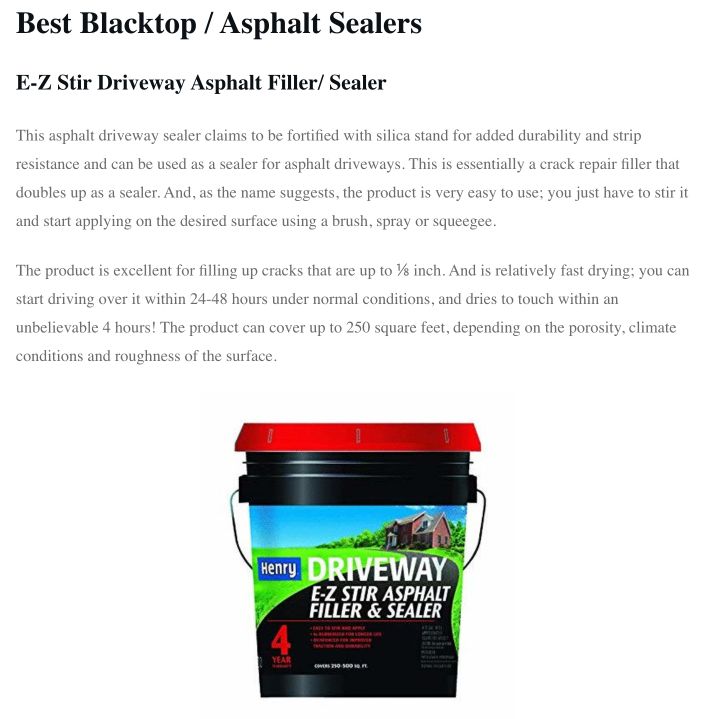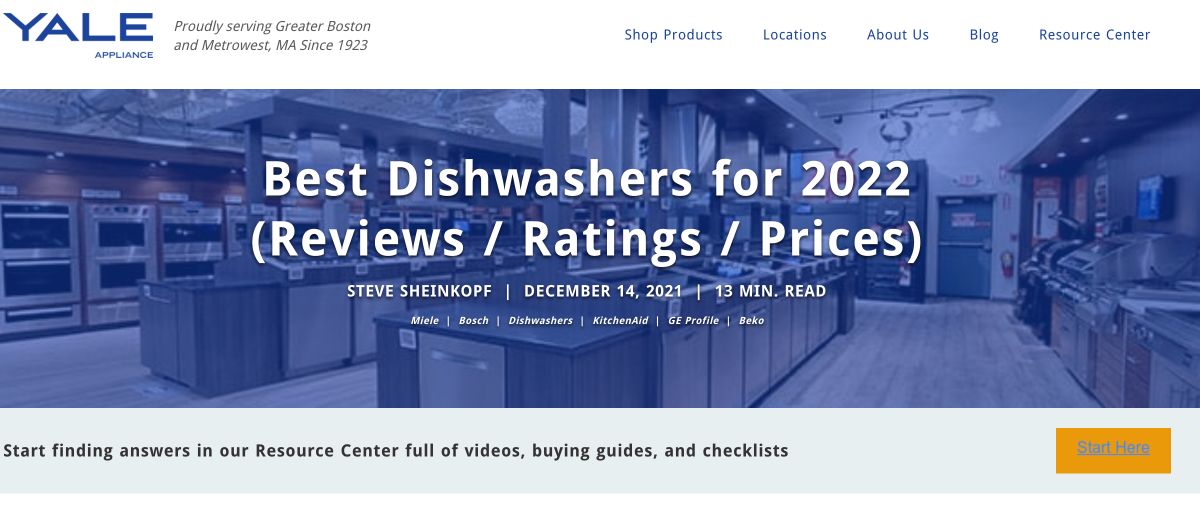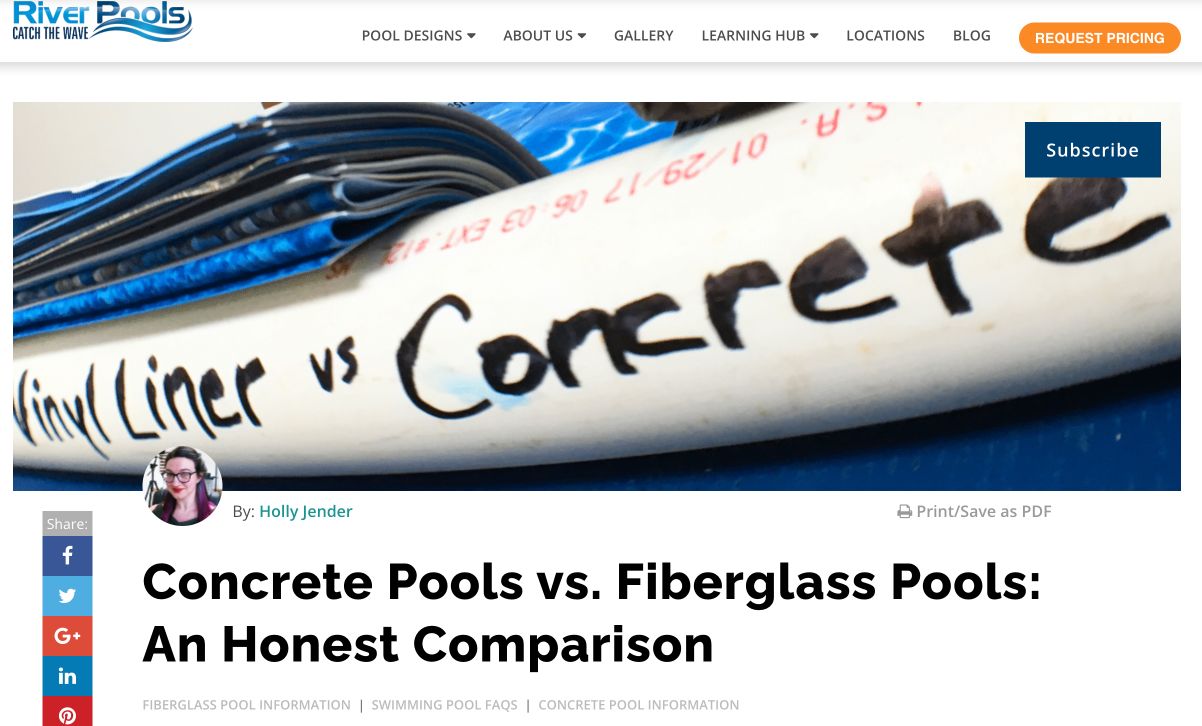[ad_1]
Finding new customers for your home improvement businesses can feel like a full-time job. You’re already doing the work, bidding on projects, and visiting job sites, along with a dozen other tasks that come up each week. So, what do you do to grow your business?
Word-of-mouth referrals are great, but in an increasingly crowded marketplace, you’re always left wondering if it’s enough. You could work with a marketing agency, but paying for mailers, newspaper ads, or radio spots doesn’t provide much of a return on investment — and it’s always hard to measure.
So you’re stuck. How do you get more customers without wasting money on approaches that seem outdated and inefficient?
The key is reimagining your approach to marketing to suit the digital age. You can bring new customers to your business without a high-priced ad spend. Today, marketing doesn’t have to be a confusing or expensive endeavor. Instead of blasting your message out and hoping the right people hear you, you can actually have your customers come to you — not through word of mouth but through inbound marketing.
You’ll come away with a fundamental understanding of how modern digital marketing strategies can attract website visitors who can enter your sales funnel as good-fit prospects.
Let’s dive in.
Inbound marketing: An overview
At the most basic level, inbound marketing is simple. It starts off with a basic premise: The internet has changed the way people buy. When customers are thinking about making a purchase, whatever it is, they start by gathering information. They do this with a computer and a search engine.
Studies show that roughly 93% of all purchases start with a search engine.
Customers begin by typing in questions, and they look for pages that answer those questions. They keep reading and they keep learning, all as they get closer and closer to making a purchase.
If they read a few articles on the same website, that company becomes an information source that they recognize and trust.
All you have to do is answer their questions thoroughly and honestly.
If you answer all of your buyers’ questions, they’ll trust you enough to buy from you.
And you won’t need to spend money on an agency each month to get a handful of subpar leads.
The people typing in questions related to your industry are way more qualified for your services than the general population that receives your mailer. Think about it: If you’re an HVAC company, wouldn’t you rather send your offer to someone who just Googled “How much does a furnace cost?” than to every single person in your town?
So, how do you know what your potential customers are going to search for? Start by thinking like your buyer.
Thinking like a homeowner
When homeowners are looking to make repairs or upgrades to their property, what’s their emotional state? Are they excited about a new project or concerned about a nagging issue?
However they’re feeling, you can be sure of one thing: They are very wary of being ripped off.
All too often, we see news stories about home services companies overcharging and under-delivering. Because homeowners have no real experience with how much a new furnace should cost, or what goes into the building of a retaining wall, they are at an information disadvantage, and they have been taken advantage of far too frequently.
Therefore, if you work in the home improvement industry, you are already fighting an uphill battle to win the trust and business of your potential customers.
And if you’re spending money on traditional advertising like mailers and radio, you might not be helping. According to a recent survey, 96% of consumers don’t trust ads at all.
But don’t despair. There is another way.
Nothing has a greater chance of building trust than inbound marketing, provided that you do it right.
Think about it. When a homeowner is looking into a particular home service — whether that’s building a patio, putting on a new roof, or finishing their basement — where do they turn? They start out on search engines looking for answers. They want to get the lay of the land so they can be a more informed buyer.
We believe that if your customer is asking a question, you should answer it, even if it forces you to talk about something uncomfortable like price or product shortcomings.
Here’s why: If a customer’s search leads them to your website, and they find your content to be helpful and honest, then they’re willing to trust your business, and they are more likely to reach out to you when they’re ready to speak to someone about their needs.
So, how do you know what people are asking — and exactly how you should be answering it? Use these tips to get started.
The 5 topics guaranteed to drive traffic to your site
Buyers everywhere are asking the same questions. Whether they’re buying a wedding cake, a trumpet, or a kitchen renovation.
At IMPACT, we sort these questions into topics we call The Big 5, and we believe they are universal.
So, what do people want to know?
- Cost: First on everyone’s mind, of course, is cost. We are all skeptical when a website won’t tell us how much a product or service costs. Does “Call for price!” actually work? I doubt it. Sure, it’s hard to say exactly how much something might cost — especially something with as many variables as a new kitchen — but customers want to have some idea. Addressing cost openly and explaining what factors make that number go up and down will give customers what they’re looking for.
- Problems: When we make a purchase, we want to know what might go wrong. This is why we’re so drawn to one-star reviews. Feeling informed about worst-case scenarios helps us feel prepared for whatever could be thrown our way.
- Reviews: Connected to problems are reviews. This could be reviews of products or reviews of entire companies. As a home services business, you know how important reviews are. According to Inc., 84% of consumers trust online reviews as much as they trust a review from a friend.
- “Best of” lists: Customers frequently Google questions that help them find the best solutions. According to HubSpot, searches with the phrase “near me” have grown exponentially. Thus, you can imagine searches like “best plumber near me” and “best floor refinishers near me” being very popular.
- Comparisons: Paint or stain? Gas or electric? Whirlpool or GE? Consumers want to put things side by side to know how they stack up. Covering these head-to-heads can help demonstrate your expertise and make your potential customers feel informed to make the best choice possible.
Building an inbound marketing content strategy
So, there you have it. The Big 5 is not rocket science, but it’s effective and universal. You can use these topics to form the basis of your entire marketing strategy.
If you can cover Big 5 topics for all of your products and services, it can start your inbound marketing strategy off on the right foot.
What is a content strategy?
An inbound content marketing strategy drives your content marketing initiatives, keeping you on track and focused in a way that brings customers to your site.
A good strategy includes both written and video content. We’ve found that video builds trust even faster than writing, but text can offer more depth and specificity.
Therefore, consider covering each of the topics in your strategy with both kinds of content.
Having the right teammates
If you’re serious about content marketing, we recommend diverting money you’ve been spending on traditional outbound marketing and hiring internal team members — a content writer and a videographer — to support your efforts.
Then, when you’re ready, you can begin to address these key topics with content that customers will find, value, and share.
If you’re not in a place to hire, that’s okay. You can do a lot of this on your own, but it will take time and energy to do it well.
Putting your marketing strategy into action
At IMPACT, we’ve worked with dozens of home improvement companies that focus on roofing, plumbing, foundation repair, insulation, remodeling services, and more.
Below, we’ll cover examples from businesses (some clients of ours, some not) that are building trust and driving sales with inbound marketing that addresses the core questions their ideal customers are asking.
1. Talking about cost
Our first example is Retrofoam of Michigan. Here, Amanda Ringler’s article addresses attic spray foam insulation cost — something sure to be on the minds of anyone interested in their service.
How much does spray foam insulation cost in the attic of an existing home in 2022?

Note how the article addresses many related questions (which makes me feel like they know their buyers). It also gives a range of costs and explains how much your energy bills could be lowered by spray foam insulation.
This video is attached to the article. Notice how we immediately see high production values without it feeling stuffy, overly scripted, or too salesy.
2. Being honest about problems
Installing a roof on a residential or commercial structure is rife with variables that influence costs, durability, and more. West Roofing Systems in Ohio dives straight into the fray in this article, talking openly about the drawbacks of a popular solution: vegetative green roofs.
4 problems and solutions for vegetative roofing
I love how author Rufus West is specific about problems, adding both solutions and alternatives to make customers feel fully informed.
In this video, they address the pros and cons of spray foam roofing. Watch how you hear experts speak while seeing action shots of roof installation, giving you a clear image of what the process entails.
3. Reviews that are unbiased and helpful (article)
Great examples of reviews are very hard to find. This is why buyers trust Yelp, Angi (previously Angie’s List), and other sites that host unbiased reviews. Still, there are examples out there.
Homeowners looking for a DIY driveway repair solution want to know they’re getting the best value for their money. A company called Seal With Ease offers reviews of products for just this reason. However, if you dig deeper, you find that they receive compensation from Amazon for recommending certain products.
That having been said, their reviews strike me as honest because Seal With Ease does not manufacture the products being sold, and the article details both pros and cons of each product — not just boosting the most expensive product they speak of.
Which sealer should you use on your driveway?

4. ‘Best of’ lists that present numerous options
Yale Appliance sells all manner of home appliances directly to consumers out of their stores in Massachusetts. Because they sell and service so many products, they have first-hand knowledge of differentiators and innovations that put one model above another.
Check out how Nic Dednah lists the top 10 dishwashers for 2022 in this article, taking into account cost, features, dependability, and more. Notice the beautiful photography, the many links and videos on related topics (I love the sound comparison!), and more.
Top 10 best dishwashers for 2022

Although this video covers just one model, notice the detail of both pros and cons that are presented in a way that feels directly related to the customer’s life. You’ll learn that if you clean a lot of silverware – if, for example, you have a large family or host frequent dinner parties – this might not be the best model for you.
5. Real comparisons that help buyers feel informed
Installing a pool is a huge and expensive undertaking that is likely a purchase a customer will make only once in their life. So, how do they know they’re getting it right?
A fundamental question about your pool is the construction material. Should you go with concrete or fiberglass? Rather than just proclaiming that fiberglass pools are superior, read how River Pools in Virginia compares concrete and fiberglass, covering pros and cons of each one in this article:
Concrete pools vs. fiberglass pools: An honest comparison

I also love how author Holly Jender addresses cost (again, it’s at the top of everyone’s mind) by breaking down 10-year ownership expenses in a handy diagram.
Now, see the same content covered in video. Again, we see high production values and a quick, entertaining format. As viewers, we know we can go to the article for more information, but the video promises an overview in two minutes — something explained at the onset.
Thinking beyond The Big 5
While The Big 5 are a wise place to start, the home improvement industry comes with its own unique questions that buyers everywhere want to know. These include a million “What is…” and “Do I…” type questions.
As you plan your content strategy, pull some team members together and brainstorm some questions your buyers might type into search engines, such as:
- What is roof flashing?
- What is the best time of year to replace a roof?
- Do I need a general contractor to handle my renovation?
- What is an epoxy liner for plumbing repair?
- Do I need a new oil tank?
- Do I need to have my furnace cleaned every year?
You get the idea.
Gated content
Once you’ve built up a library of valuable content, you can focus on creating high-value content that can help bring in more leads.
It could be a guidebook to everything you need to know about metal roofs or a checklist for getting your window replacement project started. Site visitors could give you their contact information to download this kind of information in a free ebook. This way, you grow your audience and your mailing list.
Inbound marketing strategy: Email marketing
As you build your database, engage with your audience through email marketing. But when you do so, focus on being helpful, not salesy. Remember to think like a customer. What kind of emails do you want in your inbox?
If your emails offer helpful, educational content, you will continue to build trust and establish relationships with your audience.
Remember, customers are suspicious of sales pitches.
This is a great place to offer a checklist or a guidebook to help people understand an unfamiliar process. In other words, think of what information you can provide that will make it easier to become your customer.
Any email campaigns you initiate should invite your customers into a conversation by providing relevant content. Help them feel well informed and that they’re being treated fairly.
You can use marketing automation software to send the right emails to the right prospects at the right time.
The perfect website for inbound marketing
Often, businesses hoping to get started with inbound marketing are wary that they’ll need a new website. In almost all cases, this is not true. You do not need a new website to get started with inbound marketing — you don’t even need a great website.
Unfortunately, there are many website design agencies out there that will gladly take your money and sell you a full site redesign that you don’t really need, telling you that it’s critical to your inbound marketing program.
Not so.
Even if your current website is a bit outdated, it probably has all the necessary functionality for inbound success:
- Can you publish a blog?
- Can you interlink between blog articles or use a tag system to organize content?
- Can you use CTAs and a landing page to capture leads?
If your website can do these three things, you’re probably good to get started.
Just remember, your website is for your customers, not for you. Focus on their problems and challenges. Speak their language.
Visitors will consider your site to be a better website than your competition’s if you have the helpful, engaging content they need.
Getting started with your content strategy
A content strategy is a detailed, evolving resource that helps guide all of your inbound marketing. Though that will look different for each company, you can get started with these basics. If you’re ever unsure about what to cover, start with The Big 5. You know your customers are thinking about and Googling questions related to these topics right now.
Then, as a secondary source, go to your sales team. We recommend recurring meetings every two weeks between marketing and sales to find out what questions your sales reps are hearing from buyers. If certain questions keep coming up, make sure you address them thoroughly in your content.
Lastly, use resources available online to generate topic ideas as well. Semrush, AnswerThePublic, and Google Trends are all great resources to help you dive into what users are looking for.
Remember, if your customers are asking a question, you should be willing to answer it — and to do so openly on your website. This sort of transparency is key for developing trust and winning customers.
If you’re serious about using content marketing to grow your business, use the examples above for inspiration, and talk to us if you’d like to learn about how our trainers and coaches can help you take ownership of your digital sales and marketing to achieve your business goals.
[ad_2]
Source link




